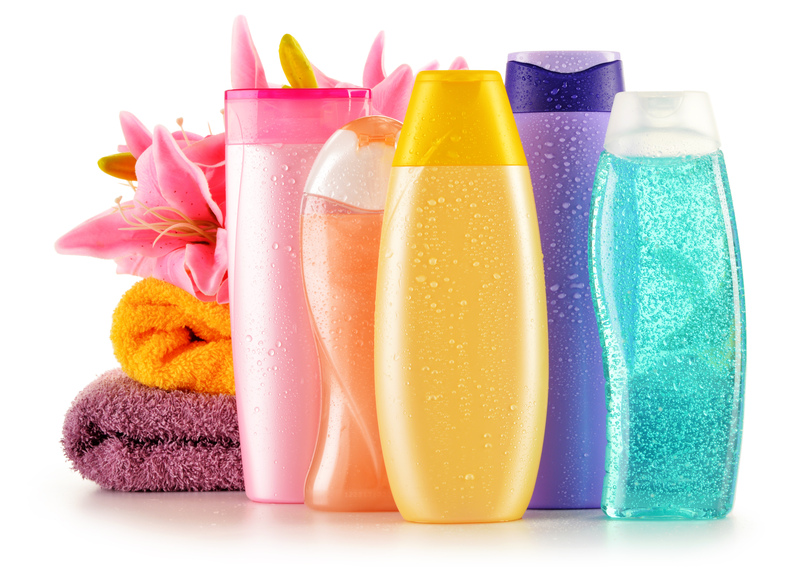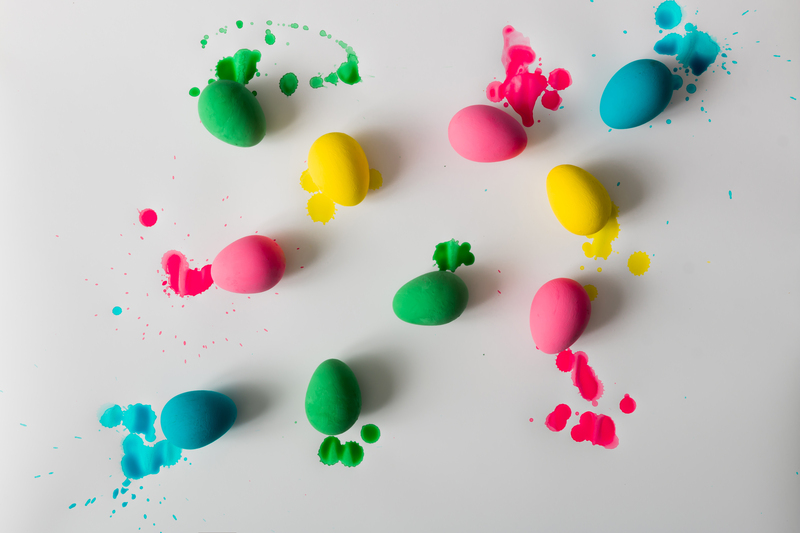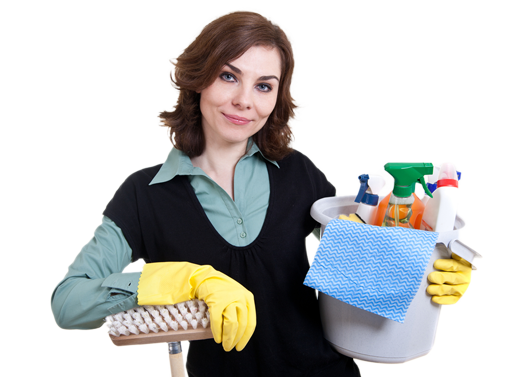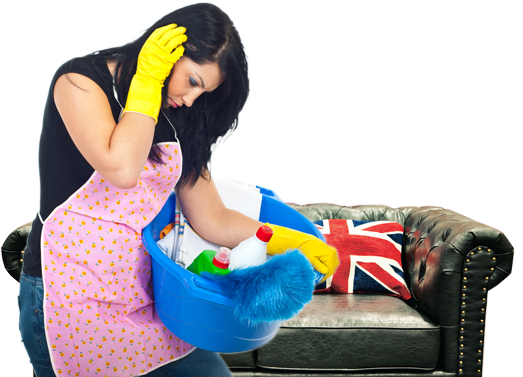The Science Behind Streak-Free Windows
Posted on 16/09/2025
The Science Behind Streak-Free Windows
Streak-free windows are more than just a point of pride for meticulous homeowners or diligent office cleaners. Achieving spotless window panes involves more than elbow grease--it's a fascinating interplay of chemistry, physics, technique, and tools. In this comprehensive article, we'll explore the science behind streak-free windows, dive into why streaks form, and provide actionable, scientifically-backed tips to help you enjoy crystal-clear glass all year round.

Why Do Streaks Appear on Windows?
The bane of window cleaning, window streaks appear in spite of our best efforts. To understand how to avoid them, we must first examine why they form:
- Residue Build-up: Household cleaners, soap, and hard water often leave behind microscopic particles or films. Once the water evaporates, these residues become visible as streaks.
- Cleaning Methods: Ineffective wiping techniques, such as using circular motions or letting the cleaning solution dry on glass, redistribute dirt and cleaning agents instead of removing them.
- Environmental Factors: Weather conditions matter. Sunlight can cause quick evaporation, "baking in" cleaner residue and dust, resulting in visible streaks.
- Tool Quality: Old or dirty cleaning cloths, paper towels, or faulty squeegees redistribute grime, spreading it in lines or smears across pane surfaces.
Ultimately, a streak is a physical manifestation of uneven residue left behind by the interaction of cleaning solutions, surface contaminants, and wiping implements.
The Chemistry of Clean Windows
Understanding Glass as a Surface
Most windows are made from soda-lime glass--a mixture of sodium carbonate, calcium oxide, and silica. This type of glass appears smooth to the eye, but at the microscopic level, it's full of pits and valleys. Dirt, dust, pollen, oils, and other contaminants settle into these tiny crevices. The challenge is not only removing these substances but doing so without leaving behind any trace or residue.
How Cleaners Work on Glass
Window cleaners use a combination of solvents (like water or alcohol) and surfactants (soap-like molecules) to break up contaminants. Surfactants reduce the surface tension of water so it can "wet" the glass more thoroughly and trap oily particles. When a surfactant-based cleaner is applied to a window, it:
- Penetrates and loosens dirt and grease locked into the glass surface.
- Suspends these particles in the liquid.
- Enables easy removal when wiped correctly, without redepositing the dirt elsewhere.
The removal process is key. When wiped or squeegeed effectively, the dirty water is whisked away before it evaporates, removing both contaminants and cleaning solution.
The Physics of Streak Formation
Evaporation Rates and Residue
The foundation of streak-free glass cleaning is removing cleaning solution before it dries. If a cleaner evaporates too slowly, it may leave behind traces of surfactant or minerals, forming streaks. If it evaporates too quickly--such as when cleaning in direct sunlight--there's no time to completely wipe it away. That's why professional cleaners work in the shade or during overcast conditions for optimal results.
Proper Motion and Friction
The technique of wiping--using a squeegee, microfiber cloth or specialized tools--matters. The ideal motion is a straight, overlapping pass, typically from top to bottom. This approach:
- Ensures dirty water is moved off the glass completely.
- Reduces risk of smears, which often occur from circular or erratic wiping patterns.
- Prevents reintroduction of contaminants to already cleaned areas.
Minimizing friction is also important. A perfectly cleaned, streak-free window is a result of keeping friction as low as possible during the wipe, so dirt and solution are pulled away, not smeared.
The Importance of the Right Tools
Microfiber Cloths
Microfiber cloths are engineered to trap dust and oil without shredding or leaving lint behind--an issue with traditional cotton or paper towels. Each microfiber is much thinner than a human hair, fitting into tiny glass grooves and grabbing microscopic particles. Their unique structure encourages effective removal and reduces the risk of leaving residue.
Squeegees
The squeegee, a staple for professional window cleaners, uses a rubber blade to push contaminated solution off the pane in a single motion. Squeegees:
- Create even pressure across the blade, scraping away both the cleaner and loosened grime.
- Enable fast work, reducing the window-drying time and the opportunity for streaks to form.
- Leave minimal moisture, which further reduces the risk of evaporation streaks.
Quality matters. A warped or stiff blade only moves the solution without removing it cleanly, so replacing blades regularly is key for streakless window cleaning.
Distilled Water vs. Tap Water
Hard water contains minerals--such as calcium and magnesium--that can be left behind as spots or streaks after evaporation. Distilled water, which is free from these minerals, provides a completely clean rinse for glass, helping you achieve truly spotless, streak-free windows.
The Role of Cleaning Solutions
Store-Bought Cleaners
Commercial window cleaning sprays combine surfactants, solvents, and sometimes builders (which bind minerals in hard water). They are optimized to dry quickly and resist residue formation. Alcohol-based cleaners evaporate rapidly, which is especially effective in avoiding streaks in humid climates.
DIY Window Cleaning Solutions
Many professionals and homeowners swear by homemade window cleaners for a streak-free shine. The standard formula is:
- 1 part distilled white vinegar (a mild acid that breaks down mineral deposits)
- 1 part distilled water
Some also add a drop of liquid dish soap to tackle oil and grease. Vinegar and water sprays cut through hard water stains, residue, and even fingerprints.
Eco-Friendly Alternatives
Natural cleaners such as diluted lemon juice or club soda can be useful, too. They rely on mild acids or carbonation to loosen particles, cleaning without harsh chemicals and minimizing residue that leads to streaks.
Best Practices for Streak-Free Window Cleaning
Combine the science above with these tried-and-true methods for outstanding results:
- Work on an overcast day or when windows are cool to the touch. This extends working time and slows evaporation, reducing streak risk.
- Start from the top, work your way down, never the other way around. Gravity ensures dirty water flows down and is not reintroduced to cleaned areas.
- Use two cloths: one for washing and a separate, dry one for buffing off residual moisture.
- Avoid circular motions; wipe in straight lines for a consistent, streak-free finish.
- Change your cleaning water or solution regularly to avoid spreading dissolved dirt back on the glass.
- Polish corners and edges with a cotton swab or detailing brush, where tiny streaks often hide.
Remember, the combination of the correct cleaner, quality tools, and sound technique is your pathway to clear, streak-free glass.
Advanced Window Cleaning: Professional Tips and Technology
Reverse Osmosis and Pure Water Systems
For commercial window cleaners, new technologies such as pure water cleaning systems are game changers. These systems use reverse osmosis and deionization to strip all minerals from water. The result: ultra-pure, residue-free water that dries on windows without leaving any streaks or deposits. Pure water is applied through telescopic poles, making even high-rise window cleaning efficient and safe.
Anti-Fog and Hydrophobic Treatments
After cleaning, some professionals apply hydrophobic coatings to glass. These chemically bond with the surface, causing water to bead and roll off, minimizing both water spots and streaks after rain. Similarly, anti-fog coatings are used for bathroom mirrors and glass to combat condensation streaks.
Debunking Common Window Cleaning Myths
Does Newspaper Prevent Streaks?
For decades, people have praised newspaper for leaving windows streak-free. The truth: while the paper's slight abrasiveness can polish glass, modern inks and recycled content may smear or leave chemicals behind. Microfiber, by contrast, is both safer and more effective.
Should You Use Ammonia-Based Cleaners?
Ammonia excels at cutting grease and is common in many glass cleaners, but it can damage tinted windows or lead to health issues in poorly ventilated spaces. Today's eco-friendly surfactant-based solutions offer a safer, streak-free alternative.
How to Spot and Fix Streaks
If you finish cleaning but can still spot windows streaks in the sunlight, don't panic:
- Let the window dry fully to spot any streaks--sometimes they're more noticeable once dry.
- Lightly mist the problem area with distilled water, then buff with a clean, dry microfiber cloth.
- If stubborn, mix a tiny amount of vinegar with the water and repeat wiping.
- Switch to a fresh, clean cloth to avoid re-depositing old residue.

The Environmental Impact of Streak-Free Cleaning
Traditional window cleaning can carry an environmental cost--excess water use, chemical runoff, single-use towels, and plastic bottles. For greener, streakless windows, consider:
- Choosing concentrated or refillable cleaning solutions in recyclable packaging.
- Opting for reusable, washable microfiber cloths instead of paper towels.
- Using pure water systems, which require only filtration and no chemicals.
- Cleaning less often by protecting windows with sealants or hydrophobic coatings to repel dirt.
Conclusion: The Art and Science of Streak-Free Windows
Crystal-clear, streak-free glass is both a sign of cleanliness and a product of science. Achieving optimum results depends on understanding the chemical makeup of glass cleaners, the physics of evaporation and wiping, and the importance of clean water and quality tools. Remember to:
- Clean with soft, lint-free microfiber materials.
- Use distilled water to prevent mineral deposits.
- Apply the right cleaner for your needs--commercial or DIY vinegar solutions work wonders.
- Work methodically, wiping in straight lines and never letting cleaner dry on glass.
The straightforward application of scientific principles enables everyone--from professionals to homeowners--to achieve flawless, streak-free windows every time. The next time you gaze through your sparkling clean panes, you'll know: the science behind streak-free windows truly makes all the difference.





